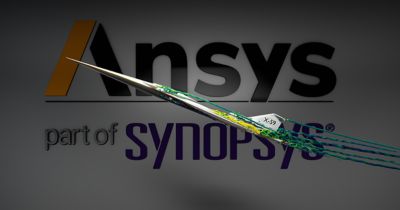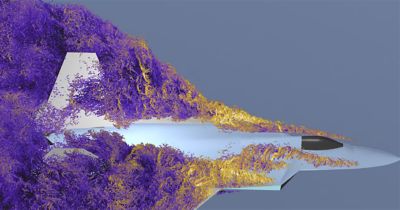-
-
Access Free Student Software
Ansys empowers the next generation of engineers
Students get free access to world-class simulation software.
-
Connect with Ansys Now!
Design your future
Connect with Ansys to explore how simulation can power your next breakthrough.
Countries & Regions
Free Trials
Products & Services
Learn
About
Back
Products & Services
Back
Learn
Ansys empowers the next generation of engineers
Students get free access to world-class simulation software.
Back
About
Design your future
Connect with Ansys to explore how simulation can power your next breakthrough.
Free Trials

Many industries using simulation to enhance, shrink, or supplement their design processes are moving toward more realistic models. Realistic models enable a more in-depth understanding of physics, empowering engineers to make more informed decisions.
To match this effort, models and simulations have become larger and more complex, requiring meshes in the range of hundreds of millions to billions of cells. Conventional meshing methods are capable of this task, but they lack the speed and scalability that companies require to meet development timelines. The rapid octree meshing technology within Ansys Fluent fluid simulation software provides a faster and more robust solution to satisfy these requirements.
Discover a Faster Alternative to Surface-Based Meshing
The rapid octree meshing process is similar to Ansys bottom-up meshing processes. This includes starting with a tessellated geometry, creating different size controls, and then meshing the geometry. The key difference between the two processes is that with rapid octree, no surface meshing step is required. The rapid octree feature directly creates a volume mesh and projects it onto the tessellated geometry. This supports an incredibly fast, scalable meshing process while ensuring the geometry is still accurately represented.
The high-level differences between the two approaches can be seen below.
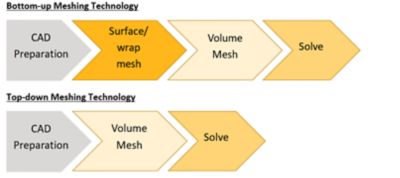
Figure 1. Comparison between the bottom-up and top-down meshing approaches.
The bottom-up approach relies on a surface-first methodology before filling the volume. This approach enables a high degree of control in each step, but it can be difficult to automate and has a limited parallelization capability.
The top-down rapid octree approach takes any input geometry with minimum preparation for meshing and creates the octree mesh (volume-first). The boundary is recovered in a subsequent step. This enables a highly parallelized, scalable mesh generation process.
The scalability of rapid octree meshing technology can be seen in Figure 2. A 3.7 billion-cell mesh was created on an increasing core count from 1,320 up to 3,960 cores for a complex detailed nonreactive geometry.
As seen in Figure 2, as the number of cores increases, the meshing efficiency in terms of millions of cells per minute increases.
Starting at 1,320 cores, the mesh is completed at 41.5 million cells per minute. At 3,960 cores, that number increases to 124 million cells per minute, yielding 99% scaling efficiency. This gives an overall meshing time of 30 minutes on 3,960 cores for the 3.7 billion-cell mesh.
Achieving Faster Mesh Times With Less Cleanup
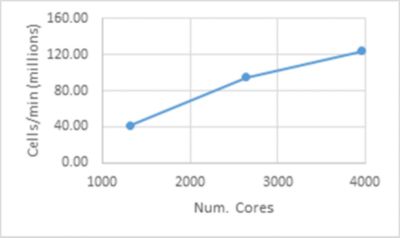
Figure 2. Rapid octree mesh scalability for a 3.7 billion-cell mesh.
In general, the rapid octree approach will bring value to any computational fluid dynamics (CFD) practitioners who are modeling large, complex geometries with mesh sizes in the hundreds of millions. Rapid octree inherently has a “fault-tolerant” nature, which can reduce the amount of computer-aided design (CAD) cleanup needed in complex models. The parallel scalability enables very large meshes to be completed in minutes, not hours or days.
A few key industries stand out as immediate beneficiaries of the rapid octree technology for exactly those reasons. The gas turbine industry is moving to modeling full-wheel geometries — whether it be the combustor, turbine, or compressor (or all three coupled) — which results in mesh sizes estimated to be in the billions. The publicly available NASA Energy Efficient Engine (EEE) full annulus geometry was meshed with rapid octree, as seen in Figure 3.
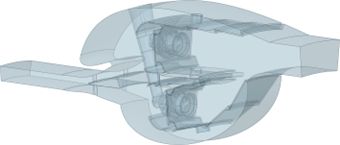
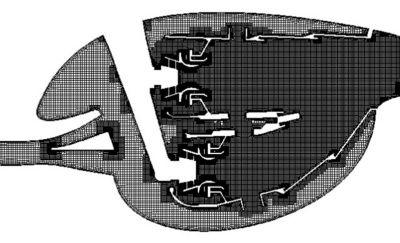
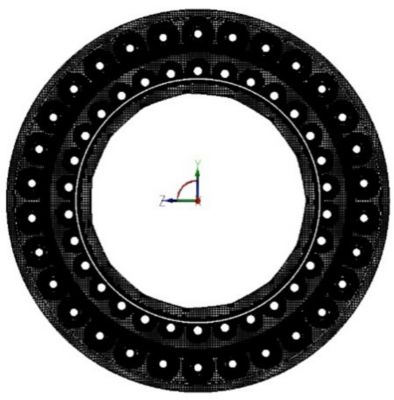

Figure 3. A rapid octree mesh of the Energy Efficient Engine full-wheel geometry. A single-sector representation (top left), midplane mesh view (top right), axial view of the mesh (bottom left), and view of the swirler (bottom right) are shown.
In the automotive industry, practitioners regularly run scale-resolving simulations for drag predictions that require hundreds of thousands or millions of cells. The DrivAer car model was used in the 4th Automotive CFD Prediction (AutoCFD4) workshop in 2024. (A detailed description of the open-cooling DrivAer test case is available from the 2021 AutoCFD2 workshop and in a technical paper by Hupertz et al. from SAE International.) Using Rapid Octree, a 135 million-cell mesh was generated on this model in 226 seconds on 160 cores, as seen in Figure 4.
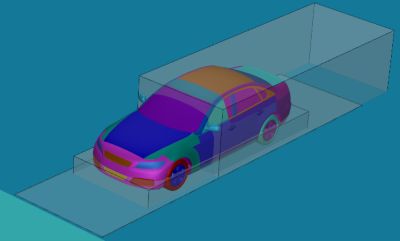
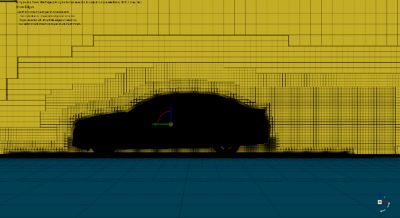
Figure 4. A rapid octree mesh of the DrivAer model showing the geometry with refinement regions (left) and the resulting mesh (right).
In modeling under-hood thermal simulations in both the automotive and industrial sectors, the geometry is extremely complex, containing hundreds or thousands of geometrical bodies that must be meshed. The rapid octree approach can reduce the effort of cleaning these bodies and produce a high-quality mesh, leading to reduced design cycle times.
Exponential Workflow Speedups: Pairing Rapid Octree Meshing With the Ansys Fluent GPU Solver
Since the full release of the 2023 R2 Fluent GPU solver, users have been reducing their solver times by orders of magnitude and shrinking their total design cycle timeline.
While the solver stage typically takes up the longest part of the simulation process, the Fluent GPU solver has compressed that time significantly. Rapid octree meshing, with its fast meshing time and high parallelization, provides the same quick workflow experience as the Fluent GPU solver, enabling users to run an entire simulation workflow in a single working day. With rapid octree meshing, you can not only run studies faster but also spend more time exploring optimization analyses, run design for variation, and look at higher-fidelity modeling approaches.
Rapid octree meshing of the 1 billion-cell EEE full annular combustor took just 24 minutes to mesh on 768 cores. The resulting mesh was then solved on 48 NVIDIA L40 GPUs in just 20 hours, which is an incredibly fast solve time.
Simulation Speeds Up Success With Volvo
In a recent press release, Volvo engineers saw a total reduction in an external aerodynamics simulation workflow time from 24 hours to just 6.5 hours using a combination of rapid octree meshing and the Fluent GPU solver. This is a significant breakthrough in aerodynamics simulations and will enable multiple design iterations per day for Volvo engineering teams.
Learn More
Rapid octree meshing is available in Ansys 2025 R1 through the Fluent Meshing GUI or a Python-scripted process. You can learn more about rapid octree meshing in the Fluent User’s Guide.
Find the Ansys booth at ASME Turbo Expo 2025 to discuss this exciting technology and learn how it can benefit your workflow.
The Advantage Blog
The Ansys Advantage blog, featuring contributions from Ansys and other technology experts, keeps you updated on how Ansys simulation is powering innovation that drives human advancement.

